Richard Rubin | |
|---|---|
| Born | 1967 (age 56–57) New York City |
| Occupation | Writer |
| Language | English |
| Alma mater | University of Pennsylvania Boston University |
| Notable works | The Last of the Doughboys: The Forgotten Generation And Their Forgotten World War Confederacy of Silence: A True Tale of the New Old South ContentsBack Over There: One American Time-Traveler, 100 Years Since the Great War, 500 Miles of Battle-Scarred French Countryside, and Too Many Trenches, Shells, Legends and Ghosts to Count |
| Website | |
| richardrubinonline | |
Richard Rubin (born 1967) is an American writer. He has published essays, articles, and short stories in a number of newspapers and magazines. He is perhaps best known as the author of The Last of the Doughboys: The Forgotten Generation and Their Forgotten World War, a history of America and World War I based upon interviews he conducted with its last veterans, and Confederacy of Silence: A True Tale of the New Old South , a personal memoir about the year he spent living and working as a newspaper reporter in the rural Mississippi Delta.
Rubin is also known for his many short pieces, including "The Ghosts of Emmett Till," an acclaimed article he published in The New York Times Magazine in 2005, in which he revisits interviews he conducted in 1995 with the two surviving defense attorneys and the two surviving jurors from the 1955 Sumner, Mississippi, trial of Roy Bryant and J.W. Milam, white men who were ultimately acquitted of the murder of the black 14-year old Emmett Till, despite overwhelming evidence of their guilt. Bryant and Milam later confessed to the murder in an interview with journalist William Bradford Huie for Look Magazine. "The Ghosts of Emmett Till" was anthologized in The Best American Crime Writing 2006. [1] In 2014, Rubin wrote a series of pieces for The New York Times, for which he visited various American World War I battlefields in France. The series, titled "Over There," was published in four installments between August and December, 2014; the final installment, titled "In France, Vestiges of the Great War's Bloody End," which deals with the Meuse-Argonne, was for a time the most emailed article in the newspaper.
Rubin was born in Manhattan and raised in Westchester County, New York. He attended the University of Pennsylvania, where he majored in history, graduating with honors in 1988. In 1991, he received a Master's in Creative Writing from Boston University, [2] where he studied under Leslie Epstein.
Rubin published his first short story, "November," in the Oxford American in 1995. That same year, he published the first of several pieces in the "Talk of the Town" section of The New Yorker, including one about sledding down West End Avenue during the Blizzard of 1996. In July, 1996 he published his first essay in the Atlantic Monthly, "Welcome to Our Tomb," a meditation on Grant's Tomb and the unexpected things visitors write in the guest register there. The piece was republished in condensed form in Reader's Digest that December, under the title "What's Written in Grant's Tomb." Rubin would go on to write publish more than a dozen pieces in the Atlantic, most of them dealing with historical subjects or things that are about to disappear. One notable exception is "It's Radi-O!", a meditation on the significance of that medium. One Atlantic piece, "The Colfax Riot," appeared in the magazine's July/August 2003 issue and is said to have been the inspiration for journalist Charles Lane's book on the same subject, "The Day Freedom Died."[ citation needed ]
Rubin has published pieces in numerous publications, including The New York Times magazine, New York magazine, Smithsonian, PARADE, and a series of essays for AARP magazine. [3] In 2007, he was an Op-Ed Contributor to The New York Times with his Veteran's Day piece "Over There — and Gone Forever," about the last surviving American World War I veteran; the Times named it one of a handful of Notable Op-Eds for that year. From 2008 to 2010, he was the Viebranz Visiting Professor of Creative Writing at St. Lawrence University in Canton, New York.
Rubin lives in Maine. [2]
Confederacy of Silence: A True Tale of the New Old South is a book by Richard Rubin. A true story and national bestseller, [4] it was first published in 2002 by Atria, Simon & Schuster. The book is 448 pages long and available in hardcover, softcover, and eBook. ISBN 978-0-671-03667-6. [5]
When Richard Rubin, fresh out of the Ivy League, accepts a job at a daily newspaper in the old Delta town of Greenwood, Mississippi, he is thrust into a place as different from his hometown of New York as any in the country. Yet to his surprise, he is warmly welcomed by the townspeople and soon finds his first great scoop in Handy Campbell, a poor, black teen and gifted high school quarterback who goes on to win a spot on Mississippi State's team — a training ground for the NFL.
Six years later, Rubin, back in New York, learns that Campbell is locked up in Greenwood, accused of capital murder. Returning south to cover the trial, Rubin follows the trail that took Handy from the football field to county jail. As the best and worst elements of Mississippi rise up to do battle over one man's fate, Rubin must confront his own unresolved feelings about the confederacy of silence that initially enabled him to thrive in Greenwood but ultimately forced him to leave it. [5]
The Last of the Doughboys is a conversational history of America's experience in World War I as recalled by its last surviving veterans, published by Houghton Mifflin in 2013. ISBN 0-547-55443-5. [1] Rubin tracked down and interviewed dozens of surviving American World War I veterans for the book. He recorded these interviews on video.

Walker Percy, OblSB was an American writer whose interests included philosophy and semiotics. Percy is noted for his philosophical novels set in and around New Orleans; his first, The Moviegoer, won the National Book Award for Fiction.

Varina Anne Banks Davis was the only First Lady of the Confederate States of America, and the longtime second wife of President Jefferson Davis. She moved to the Presidential Mansion in Richmond, Virginia, in mid-1861, and lived there for the remainder of the Civil War. Born and raised in the South and educated in Philadelphia, she had family on both sides of the conflict and unconventional views for a woman in her public role. She did not support the Confederacy's position on slavery, and was ambivalent about the war.
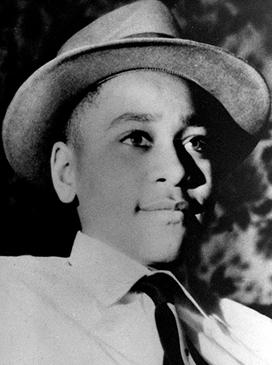
Emmett Louis Till was an African American boy who was abducted, tortured, and lynched in Mississippi in 1955 at the age of 14, after being accused of offending a white woman, Carolyn Bryant, in her family's grocery store. The brutality of his murder and the acquittal of his killers drew attention to the long history of violent persecution of African Americans in the United States. Till posthumously became an icon of the civil rights movement.

Neo-Confederates are groups and individuals who portray the Confederate States of America and its actions during the American Civil War in a positive light. The League of the South, the Sons of Confederate Veterans and other neo-Confederate organizations continue to defend the secession of the former Confederate States.

Shelby Dade Foote Jr. was an American writer, historian and journalist. Although he primarily viewed himself as a novelist, he is now best known for his authorship of The Civil War: A Narrative, a three-volume history of the American Civil War.
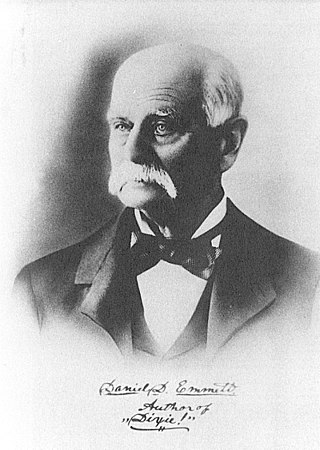
Daniel Decatur Emmett was an American composer, entertainer, and founder of the first troupe of the blackface minstrel tradition, the Virginia Minstrels. He is most remembered as the composer of the song "Dixie".

"Dixie", also known as "Dixie's Land", "I Wish I Was in Dixie", and other titles, is a song about the Southern United States first made in 1859. It is one of the most distinctively Southern musical products of the 19th century. It was not a folk song at its creation, but it has since entered the American folk vernacular. The song likely rooted the word "Dixie" in the American vocabulary as a nickname for the Southern U.S.
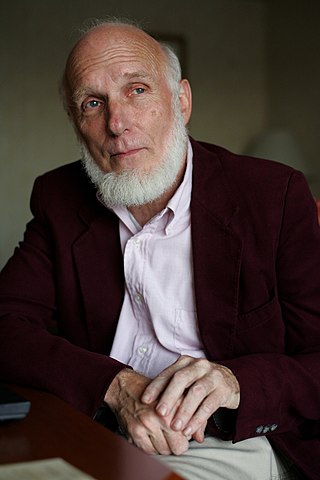
James William Loewen was an American sociologist, historian, and author. He was best known for his 1995 book, Lies My Teacher Told Me: Everything Your American History Textbook Got Wrong. A 2005 book, Sundown Towns: A Hidden Dimension of American Racism, galvanized a national effort to develop a list of sundown towns.

P. P. Werlein (1812–1885) was an American music publisher, piano dealer, and musical instrument retailer based in New Orleans, Louisiana in the 19th century. Among other Civil War songs, he published the sheet music for "Dixie". The retail music stores that he founded, Werlein's for Music, were among the largest in the American South during much of the more than 150 year existence of the stores.

Look was a biweekly, general-interest magazine published in Des Moines, Iowa, from 1937 to 1971, with editorial offices in New York City. It had an emphasis on photographs and photojournalism in addition to human interest and lifestyle articles. A large-sized magazine of 11 in × 14 in, it was a direct competitor to market leader Life, which began publication 3 months earlier and ended in 1972, 14 months after Look shut down.
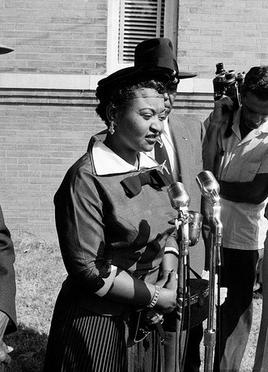
Mamie Elizabeth Till-Mobley was an American educator and activist. She was the mother of Emmett Till, the 14-year-old teenager murdered in Mississippi on August 28, 1955, after accusations that he had whistled at a Caucasian grocery store cashier named Carolyn Bryant. For Emmett's funeral in Chicago, Mamie Till insisted that the casket containing his body be left open, because, in her words, "I wanted the world to see what they did to my baby."
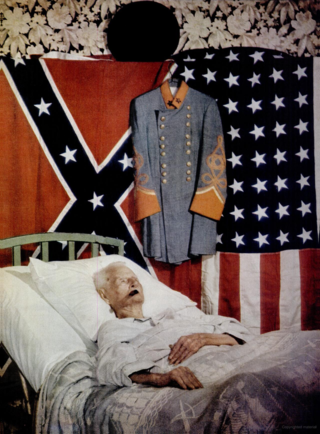
Walter Washington Williams claimed to have been a forager for Hood's Brigade, which if true made him the last surviving veteran of the American Civil War. Serious doubt has been claimed about the veracity of these claims.
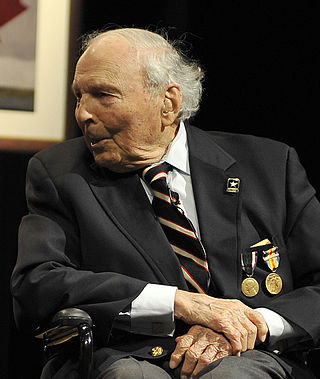
Frank Woodruff Buckles was a United States Army corporal and the last surviving American military veteran of World War I. He enlisted in the U.S. Army in 1917 aged 16 and served with a detachment from Fort Riley, driving ambulances and motorcycles near the front lines in Europe.
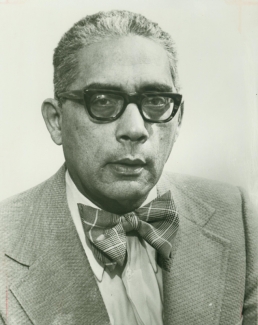
Simeon Saunders Booker Jr. was an African-American journalist whose work appeared in leading news publications for more than 50 years. He was known for his journalistic works during the civil rights movement and for his coverage of the 1955 murder of 14-year-old Emmett Till. He worked for The Washington Post, Jet, and Ebony.

Montsec is a commune in the Meuse department in Grand Est in north-eastern France. Fighting in World War I and World War II took place in and around Montsec. The Montsec American Monument was built here during the 1930s by the American Battle Monuments Commission. The monument, dedicated in 1937, commemorates the American forces who fought in the Battle of Saint-Mihiel in World War I.
Confederacy of Silence: A True Tale of the New Old South is a 2002 book by Richard Rubin. It is about Rubin's experience as a recent University of Pennsylvania graduate and work as a reporter in Greenwood, Mississippi. It was published by Atria Books in 2002 (ISBN 9780671036669).
In Lee's Last Retreat: The Flight to Appomattox, historian William Marvel identified Private Pleasant Riggs Crump, of Talladega County, Alabama, who died December 31, 1951, as the last confirmed surviving veteran of the Confederate States Army. Citing English professor and biographical researcher Dr. Jay S. Hoar, Marvel states that after Crump's death a dozen other men claimed to have been Confederate soldiers, but military, pension, and especially census records prove they were impostors. Marvel further wrote that the names of two other supposed Confederate survivors alive in April 1950, according to Hoar, are not on the Appomattox parole lists and one, perhaps both, of their Confederate service claims were faked. An extensively researched book by Frank L. Gryzb, The Last Civil War Veterans: The Lives of the Final Survivors State by State, published March 29, 2016, supports the conclusion by Hoar, Marvel, Serrano and others that Pleasant Crump was the last confirmed and verified surviving veteran of the Confederate States Army.
Willie Louis was a witness to the murder of 14-year-old Emmett Till. Till was an African-American child from Chicago who was murdered in 1955 after he had reportedly whistled at a white woman in a Money, Mississippi, grocery store. Till's murder was a watershed moment in the Civil Rights Movement. Louis testified in court about what he had seen, but an all-white jury found the men not guilty. Fearing for his life, Louis moved to Chicago after the trial and changed his name from Willie Reed to Willie Louis. He was interviewed in 2003 for the PBS documentary The Murder of Emmett Till and was interviewed the next year on the CBS News television program 60 Minutes.
Amanda Elzy High School (AEHS) is a high school in unincorporated Leflore County, Mississippi, south of Greenwood, and part of the Greenwood-Leflore Consolidated School District.
James L. Hicks was a member of the black press from 1935 to 1977. He wrote a column for the Baltimore Afro-American advocating opportunities in the U.S. Army. Hicks covered school integration in Little Rock, Arkansas and Oxford, Mississippi, and his coverage of the Emmett Till murder trial in Sumner, Mississippi.